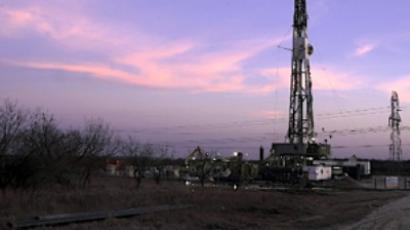Russian oil exchange the way of the future
Being the world’s biggest producer of oil, Russia needs to develop its own trading platform, after having carefully learnt from foreign experience first, Russian analysts say.
Oil is usually priced in barrels. The measurement originates from the 1860s, when the early Pennsylvania oil field producers were forced to store oil in barrels usually meant for beer or turpentine.
The cost of a barrel, which is equal to 159 liters, is dependent on a number of factors, including supply, demand and speculation. It is also determined by the quality of the oil, with certain blends commanding a premium over others. Logistics and a regional factor are also important components of the final price, adds Victor Mishnyakov, a senior oil and gas analyst at Uralsib.
“We have different discounts and premiums of one blend to another and that really depends on multiple factors, starting with the cost of transportation and quality of crude itself to the specifics of refining of this or that crude and also to the demand in this or that region to where this crude can go.”
Most oil traded usually uses two main benchmarks: West Texas Intermediate and Brent Blend, both of which are considered among the sweetest crudes – “sweet” meaning that it has a sulphur content of less than 0.5%.
This is despite the fact there are more than 200 blends in the world. Many of these, however, have a high sulfur content, making them “sour” blends and therefore harder to refine.
But, with the North Sea oil fields reaching the end of their life and with it the Brent standard, newer blends, such as Russia’s Urals blend or the ESPO pipeline blend, are increasingly becoming the standard by which others are judged.
Russia has become the world’s biggest oil exporter and many believe the time has come for the country to establish its own international trading platform, rather than leaving it to the US, the UK and Singapore. Gennady Shmal, a President at oil and gas industry union, thinks this can also turn the Rouble into an internationally-traded currency.
"If we had our own stock exchange where we could trade oil, I think that, firstly, we could trade not only in US dollars, but also in Roubles, especially for CIS countries, among others. I mean, we are talking about the possibility of the Rouble becoming a major trading currency, or even a reserve currency. This can only be done if the Rouble is fixed to serious material resources, such as gold, oil and gas."
The Urals blend currently trades at a $2 discount to Brent, yet many believe this is an unfounded discount, one which could be erased through the establishment of a local oil exchange. But for now, Russia is still happy to trade through the existing channels.
Analysts agree that both the market regulators and oil industry players here still need to learn more from the oil trading heavyweights in London and New York before attempting to shift the balance of trading power in oil.














